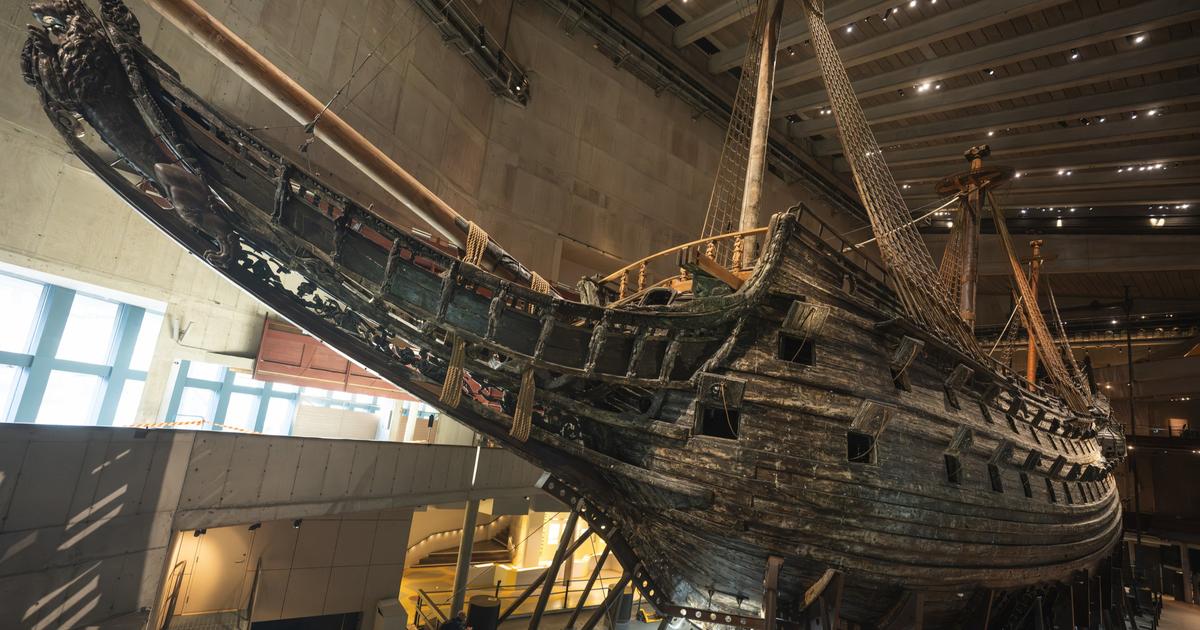The wreck exposed in a Stockholm museum, raised to the surface in 1961 after having shipwrecked in 1628, sank due to gravity. A fragile gem at the heart of a colossal conservation project planned over several years.
A metallic structure is being installed to support the Vasa hull, majestic three-masted which flowed almost 400 years ago in Stockholm waters and in the heart of a colossal four-year conservation project. “We have installed part of the new structure, a ber (a support, editor’s note) made necessary because the ship needs better support, because the old, dating from 1961, is no longer enough”indicates Tuesday April 8 to AFP Peter Rydebjörk, project manager, showing the new structure surrounding the warship.
Intended to be sent to the south of the Baltic, the three-masted, symbol of a booming Swedish kingdom, had only a brief journey, the day of his inaugural trip in 1628. After barely fifteen minutes, he capsized before sinking into the waters of the Swedish capital because of a design defect. He will only have a kilometer, costing several dozen crew members.
Protected in the mud and the little salty water of the Baltic for more than three centuries, the Vasa had been raised to the surface in 1961, after a delicate operation. Since then, the building has been exposed in one of the most popular museums in Stockholm. But the conservation of the wreckage is complex: the wood shrinks over the years, and the ship is sagging due to gravity. In addition, it tilt slightly on a port.
Estimated work between 13.3 and 17.7 million euros
“The old ship’s support structure does not really do the work it should do, because the Vasa must be supported in the right places. And this new support structure will support the ship where it is most solid inside ”specifies the project manager. The first phase of this project named «Support Vaasa» (“Support Vasa”) consisted in stabilizing the wreck. The second aim is to create a structure in order to endure its weight and finally, it will be a question of adjusting its position within the museum.
In 2028 – If the calendar is respected – the shell will be supported both externally and internally, to mark the 400 years of the sinking. More than ten years of research have been necessary to get there, and the cost of renovation is estimated between 150 and 200 million Swedish crowns (between 13.3 and 17.7 million euros).
data-script=”https://static.lefigaro.fr/widget-video/short-ttl/video/index.js”
>
